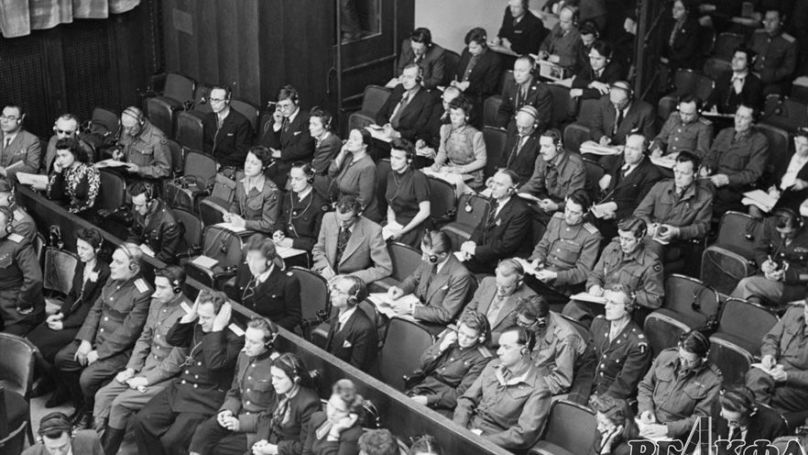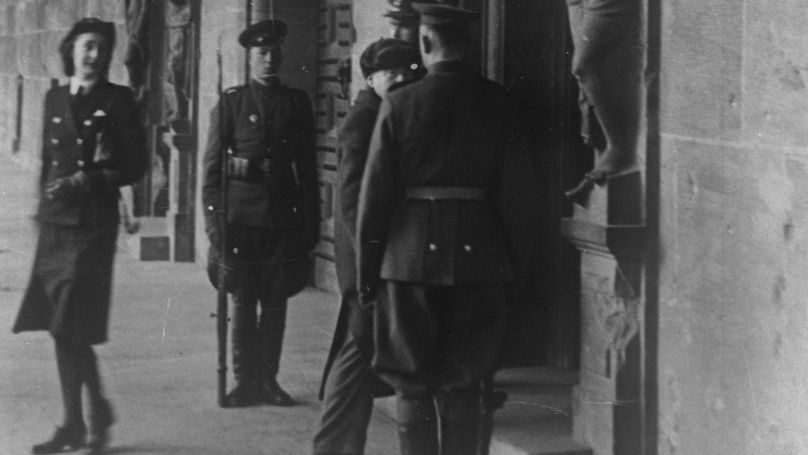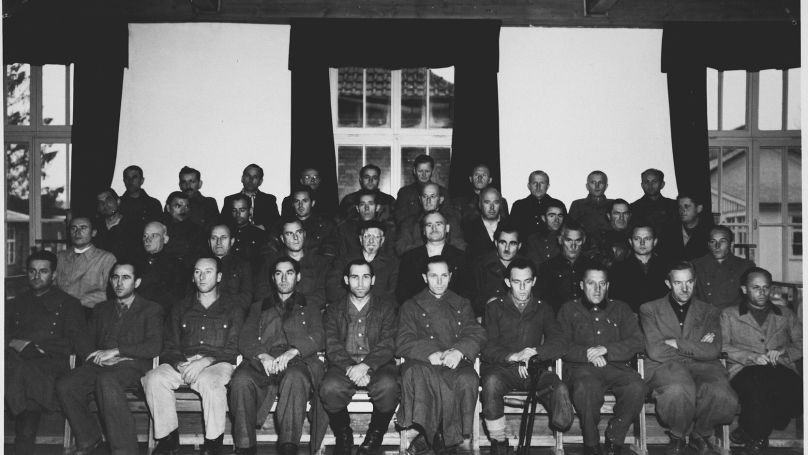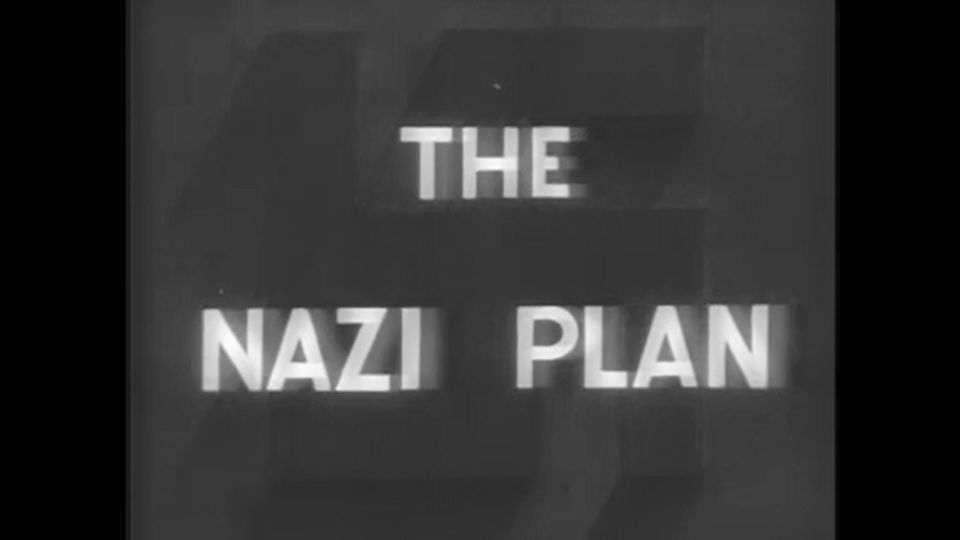The world’s most famed directors have shot movies about the Holocaust. For many, the topic is a family-related and deeply personal one.
The creators of the movies had Jewish origins, and they themselves or their relatives suffered at the hands of the Nazis, or happened to witness the crimes.
Paul Verhoeven observed the war as a little boy, Roman Polanski miraculously survived in the Kraków Ghetto, and George Stevens worked as a war operator and made a film - evidence for the Nuremberg trials.
Despite their artistic merits, quite a few movies about the Holocaust failed to become popular, because it is unbearably hard to watch them.
Among the favourites are films about rescue, those with a happy end, if such an end is at all possible when it comes to the Holocaust.
The absolute leader in terms of this is “Schindler's List” - a genuine box office hit of the world’s movie industry.

The first movie showing the Holocaust was made as early as 1940, a British-American thriller called “Night train to Munich”. During the war, no movies were shot about the atrocities of the concentration camps and suffering of Nazi victims. However, as soon as the war ended, cinematographers from all around the world started to study the topic.
1945: the first movie about the mass murder of Jews “The Unvanquished” (USSR).
1946: the first movie that includes documentary snapshots from concentration camps “The Stranger” (US).
1946: the first German film about horrendous murder of Jews “Murderers Are Among Us”.
In the 1950-1960s, two to six movies about the Holocaust came out every year. Over the last 50 years, they have been released by the dozens. In 2018 alone, five movies came out. Cinematographers from a host of countries have worked on the subject, among the leaders in terms of the number of movies are the US and Germany. Overall, about 300 movies of different genres have been made, including action films and melodramas.
“Black Book”
The Netherlands
2006
A work by the Netherlands’ most famous director, Paul Verhoeven, and the most expensive and commercially successful movie in the country’s film industry. It’s a holder of some of the nation’s top cinema awards.
The film depicts the story of a Jewish girl, a fugitive from Germany. She tries to survive in Nazi-occupied Holland, establishes contact with the Resistance, and finds the murderer of her family. She further miraculously escapes and then gets repatriated to Israel.
The key role is played by Carice van Houten, who is today internationally recognised for her part of as a red priestess in the TV series “Game of Thrones”.
When Paul Verhoeven was five, his family moved to the Hague. They lived in a house that neighboured a German military base, which was frequently bombed. The family narrowly escaped death, but as follows from the movie director’s recollections, he has since childhood retained the images of explosions, burning houses, and corpses lying in the street.
“Schindler's List”
US
1993
Steven Spielberg’s drama is based on the real story of German businessman Oscar Schindler, who saved about 1,200 Polish Jews by employing them at his factory.
Spielberg had been searching for a director for the movie for ten years, but in the end, started to shoot “Schindler's List” himself, having yielded to the persuasion of prominent Hollywood director Billy Wilder.
Wilder was originally from the Polish part of Austria-Hungary, and his cinematographic career started in the Weimar Republic, where a number of movies were made based on his scripts. After the Nazis came to power, Wilder emigrated, while his parents died in the Auschwitz concentration camp.
His opinion was a decisive one for Spielberg, who also came from a Jewish family: on his father’s side – from Kamianets-Podilskyi, western Ukraine, and on his mother’s side - from Odessa, a city in southern Ukraine.
Polish Jew and Holocaust survivor Mieczysław "Mietek" Pemper worked as a consultant during the shooting of the film. While being a concentration camp prisoner, he became a secretary of the warden. At his behest, Schindler began to secretly rescue Jews, and it was Pemper who compiled the list.
Steven Spielberg turned down the revenues from the film, dubbing them “bloody money”. (The movie raised $321 million dollars, while its budget was only $22 million).
Spielberg used the money to set up the “Shoah Fund” (“Shoah” means “a catastrophe” in Hebrew), whose mission is to preserve the memory of the Holocaust.
“Sobibor”
Russia
2018
Konstantin Khabensky’s directorial debut. He also played the main role in the movie, which is based on the real story of one of the few successful mass escapes from a concentration camp.
The breakout from the camp Sobibor in Poland took place in October 1943. A key role in it was played by a Soviet POW, Lieutenant Alexander Aronovich Pechersky. During his three-week stay at the camp, Pechersky led an international group that rose in rebellion. The majority of the around 420 escapees were caught and executed. About 50 people lived to see the end of the war.
Nine fugitives led by Pechersky joined a guerrilla unit in Belarus, but when it was disbanded, Pechersky was sent as a former prisoner to a penal military unit. Its commander, having heard the story about the rebellion in Sobibor, allowed him to travel to Moscow to inform the Extraordinary State Commission about it.

The members of the commission – writers Pavel Antokolsky and Veniamin Kaverin – wrote an article about it and published it in the magazine “Znamya”. Later on, the article was included in “The Black Book”, a compilation of materials dedicated to the Nazis crimes against the Jewish people.
“The Black Book” was banned in the USSR due to a flare-up of political anti-Semitism, and for this reason Soviet readers were for many years kept in the dark about the deeds of Pechersky and his pals.
Abroad, the story about the rebellion in Sobibor is widely known. It is the topic of at least three popular books, and in 1987, a British-Yugoslav movie “Escape from Sobibor” was shot, with Pechersky played by famous Dutch actor and Hollywood star Rutger Hauer.
“The Grey Zone”
US
2001
Critics have dubbed “The Grey Zone” the most sombre movie about the Holocaust. It is based on real events that took place at the Auschwitz concentration camp in October 1944.
At the centre of the plot are members of the Jewish Sonderkommando, who were responsible for undressing victims and taking them to the gas chambers, and then retrieving gold dental crowns from the corpses before their utilisation. In the end, they would attempt to stir up a rebellion that ended in their defeat and horrid punishment.
Director Tim Blake Nelson is from a Jewish family. His maternal ancestors fled from Germany before the outbreak of World War II, while on his paternal side, they originated from Russia.
Several top Hollywood stars like Harvey Keitel, Steve Buscemi, and Mira Sorvino are among the cast.
Due to the exceptionally crushing content, the movie didn’t win the public’s favour, but won high praise from critics.
“The Pianist”
US
2002
Director Roman Polanski shied away from the topic of the Holocaust for a long time – 10 years prior to “The Pianist”, Steven Spielberg had offered Polanski to be the director of “Schindler's List”. In his childhood, Polanski was lucky to survive in the Kraków Ghetto, making his escape at the time it was liquidated. His mother died in the extermination camp Belzec. Some people close to Polanski note that what he saw at the age of 8 has been tormenting him ever since.
Yet, he shot the film which would be called one of his best works and one of the best movies about the Holocaust, as well as one of the world’s most outstanding movies in general.
“The Pianist” grabbed the Palme d'Or at the Cannes Film Festival and three Oscars.
The movie was based on the autobiography of the pianist Władysław Szpilman, “a Warsaw Robinson”. The notion was used to refer to people who after the defeat of the Warsaw rebellion and during the fight for the liberation of the Polish capital, managed to hide in crypts and survive.
Most of the “Robinsons” were males and Jews. Overall, 400 to 1,000 people managed to survive in such a way.
In one of his documentary articles, Soviet writer and journalist Vasily Grossman, who entered Warsaw together with Soviet troops, depicted how he detected ten “Robinsons”.
Szpilman survived with the help of the German officer Wilhelm Hosenfeld, who didn’t give away the pianist’s hiding place and brought him food. Hosenfeld rescued several more Jews and Poles in a similar fashion. After the liberation of Warsaw, Hosenfeld ended up in Soviet captivity. No one believed his story, and he died in Stalingrad in 1952.
In 2007, the Polish president posthumously awarded him a state decoration, and in 2009, at the request of Szpilman’s son and thousands of those who watched the movie “The Pianist”, the World Holocaust Remembrance Centre Yad Vashem recognised Wilhelm Hosenfeld as Righteous Among the Nations.
“Life is Beautiful”
Italy
1997
The director and main actor was famous comedian Roberto Benigni. The film won a Grand Prix at the Cannes Film Festival and three Oscars.
The general public and high-profile judging panel lauded the movie, but some critics called it out for what they believed was inappropriate frivolity with regard to the Holocaust.
The film’s creators were accused of depicting an impossible situation: a father and his little son ending up together at a concentration camp, and the parent manages to hide his child for a long time, and that the concentration camp didn’t resemble a real one. For his son not to be frightened, the father creates an illusion of a game, making both him and viewers laugh.
Paradoxically, the movie is based on a true story.
What underlay the script is the book “In the End, I Beat Hitler” by Rubino Romeo Salmonì - an Italian Jew and Auschwitz prisoner. There is no portrayal of a child there, but the comic, playful approach to the surrounding atrocities helped the main character survive, just like the little boy in Benigni’s film. Apart from this, Benigni based his film on the stories told by his own father, who finished the war on the American side.
Before that, he had spent two years at a Nazi labour camp, which he told his children about with humour, like a cheerful adventure. Just like the character in his movie, he did so for one purpose - not to scare his children.
“The Diary Of a Young Girl”, or “The Diary of Anne Frank”
US
1959
Irrespective of its name, the events depicted in the movie are far from what a Jewish girl recounted in her diary. The film was awarded three Oscars.
The key role was to be played by Audrey Hepburn, who was the same age as Anne Frank, and also lived in Amsterdam during the years of occupation and more than once saw Jews being deported.
However, the 30-year-old star refused to play a 14-year-old girl. She also didn’t want to revive her memories about the occupation, during which the Nazi shot some of her relatives.
The film’s director, George Stevens, served in the army during World War II and headed a war film unit. His team made shots of the liberation of Paris, and the meeting of Soviet and American forces on the Elbe. Stevens was part of a group of camera operators who accompanied then-General Dwight D. Eisenhower during the liberation of Dachau.

The chilling chronicles shot in Dachau served as evidence during the Nuremberg trials, and George Stevens was one of those who shot this movie for the tribunal.
“Inglourious Basterds”
US
2009
The 2009 war movie directed by legendary director Quentin Tarantino won one Oscar (it received eight nominations), a “Golden Globe”, and a few other awards, most of which went to one actor, relatively unknown in the US at the time - Christoph Waltz.
At the centre of the plot is a purely fictional story. In occupied Paris, there is a special group of Jewish terrorists-avengers who kill Nazis.
One of them, a professional “hunter of Jews” (Waltz’s character), tries, having conducted a spate of atrocities before that, to get into contact with the US command via the Jewish fighters, and promises to kill all Third Reich’s top brass, including Hitler.
Tarantino recounted how he had cherished the idea of a war drama for many years.
This movie of his failed to become a real hit, but it revealed exceptionally talented Austrian actor Christoph Waltz to the world. The latter instantly became a real star, with roles and awards pouring in profusely.
Waltz even played Mikhail Gorbachev in the movie “Reykjavik”, dedicated to the negotiations between the Soviet president and Ronald Reagan in 1986.
Today, Waltz is again starring in a movie about the Holocaust. He was offered a role in the screen adaptation of a grotesque novel about an SS officer and murderer of Jews, who after the war declared himself a Jew by religion and emigrated to Israel.
























